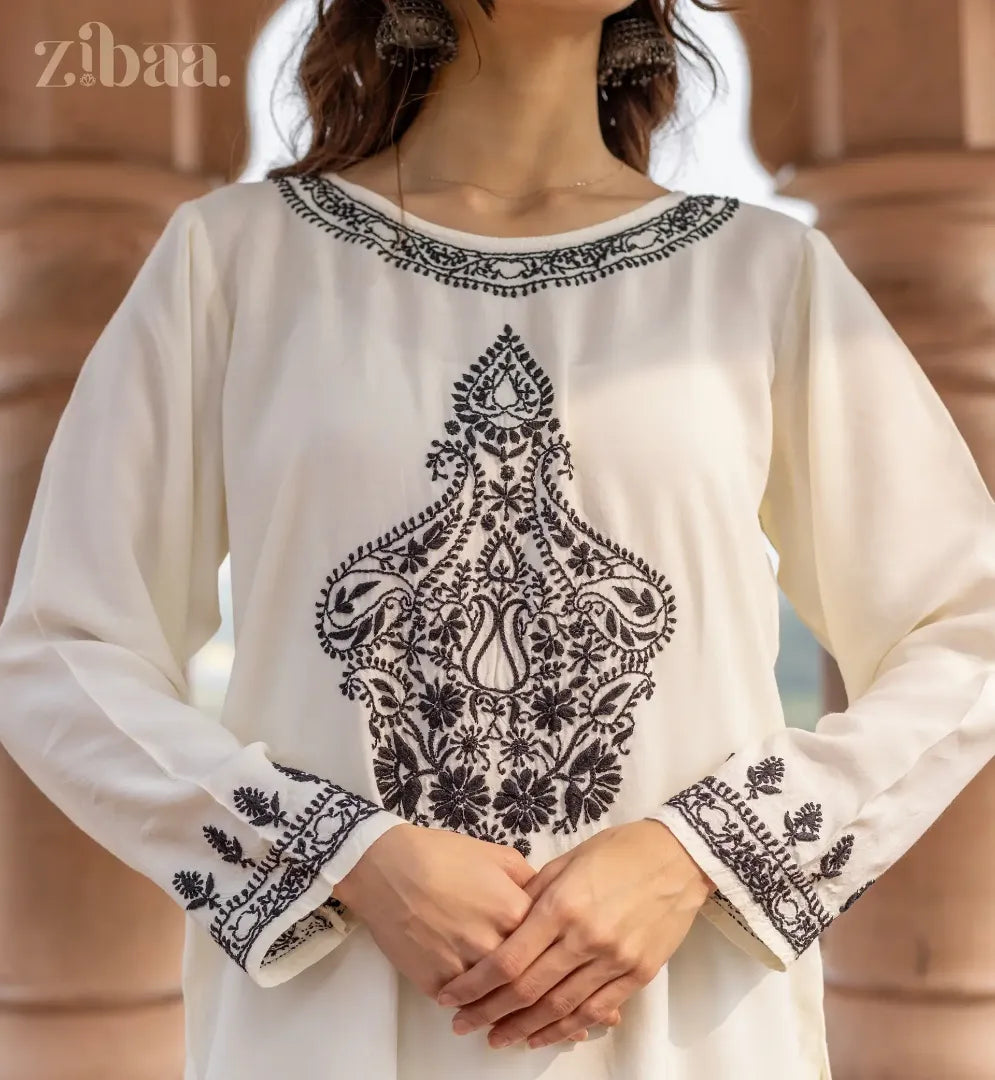The white Chikankari kurta truly symbolizes the rich cultural heritage of India passed down through generations. Recognized globally for its delicate hand embroidery, the origins of this graceful attire can be traced back to the 3rd century BC. Over the centuries, the luxurious fabric and intricate needlework became characteristic of traditional Lucknavi culture. From the royal courts of the Mughals to the everyday wardrobe of modern India, the story of the Chikankari kurta is one of perseverance and evolution.
Today, it remains an iconic Indian garment that encapsulates the labor of love involved in preserving a centuries-old craft. Both fashionable and auspicious, the white Chikankari kurta with its jaaliwork embroidery represents the very best of Indian textile arts and continues to make its mark as a global cultural export. Read on to know about the cultural significance of white chikankari kurta.
Historical Background of White Chikankari kurta
The origins of exquisite Chikankari embroidery can be traced back to the 3rd century BC around. Historical records suggest the earliest forms of this needlework started during the Mughal empire in the 16th century. The wife of Mughal emperor Akbar brought this craft to the royal courtyard, where it flourished and evolved over the next 300 years.
Over the centuries, the craft of Chikankari was patronized by the Nawabs of Awadh and slowly centered around the city of Lucknow. The delicate stitching and embroidery work became characteristic of traditional Lakhnavi culture. From basic white-on-white designs, the craft evolved to incorporate colored threads and gold zari work during the late 19th century. The traditional white Chikankari kurta became ubiquitous as daily ethnic wear.
Craftsmanship and Technique
At its core, Chikankari is the art of embroidering beautiful and intricate designs on fabric using a needle and thread. Master artisans use over 30 types of stitches and weave magic with their nimble fingers to create the delicate jaaliwork, murri and taipchi work seen on white Chikankari kurtas. The painstaking process requires immense skill, patience and an eye for detail.
Process of Making a Chikankari Kurta
The making of a white Chikankari kurta involves bleaching and dying fine fabrics multiple times to achieve an immaculate white base. Designs are often marked using wooden blocks before the tedious embroidery commences. Every motif, shape and jaali is lovingly stitched using white untwisted fine cotton or silk threads on the fabric. The final finishing entails washing, starching and ironing out the garment.
Regional Variations and Styles
Over the centuries, Lucknow has remained the hub for the quintessential white-on-white zardozi Chikankari kurta. However, artisans across parts of Uttar Pradesh have preserved their unique regional embroidery styles. The Chikankari work in Varansi features vibrant colors and floral bootis. The fine jaaliwork of Murshidabad stands out for its delicate perfection. Rajasthani and Gujarati artisans have also added their unique signature designs to the white Chikankari kurta.
Cultural Significance
In many ways, the white Chikankari kurta is symbolic of India’s rich cultural heritage passed on through generations. Traditionally, the fine jaaliwork embroidery was representative of jharokhas designed to enable the purdah system while allowing women to glimpse at the outside world. The craft itself has withstood the test of time as an important source of livelihood in many communities.
Occasions and Settings
An epitome of grace and elegance, the white Chikankari kurta is considered a festive garment for occasions like weddings, prayers and celebrations. People often gift these heirloom pieces to newly weds and brides. The versatile white kurta paired with other garments also works as daily, work and travel wear across India and worldwide.
Socio-Economic Impact
The labor-intensive Chikankari embroidery work sustains livelihoods and empowers local communities, especially women artisans. As a largely cottage industry, Chikankari provides income generation opportunities at the grassroots level in towns and villages. The wide adoption of white Chikankari kurtas in ethnic fashion also enables India to capitalize the booming export market.
Challenges Faced by Artisans
Despite governmental efforts, Chikankari artisans face issues like declining profits, inability to scale production and lack of organizational setups compared to power looms. Younger generations are also moving away from traditional handicrafts impacting the transfer of skills. Maintaining authenticity along with consistent quality also remains challenging.
Conclusion
The enduring white Chikankari kurta serves as a canvas that carries forth India’s living heritage with every fine jaali, booti and embroidery. Modern fashion may have reinterpreted the Chikankari kurta in contemporary styles. Yet, the traditional white Chikankari kurta remains an unparalleled epitome of India’s rich textile legacy - one intricate stitch at a time.





